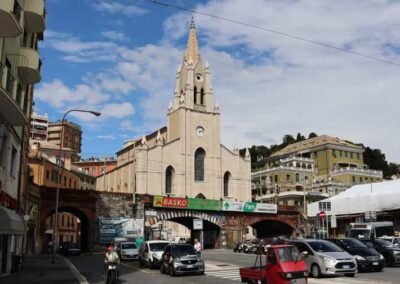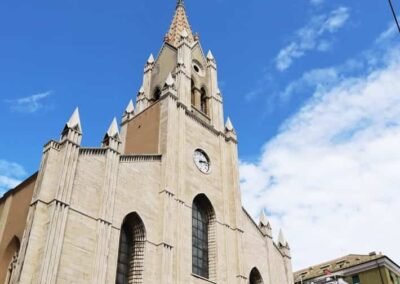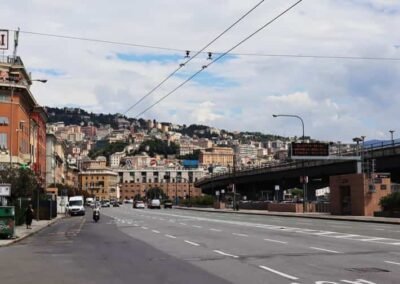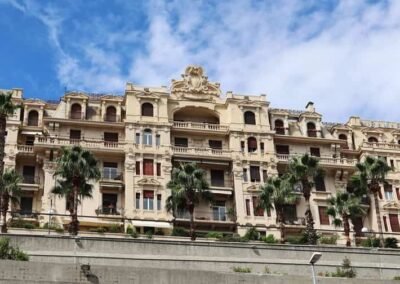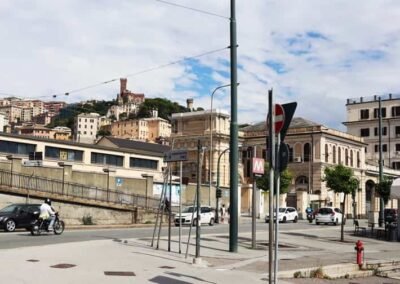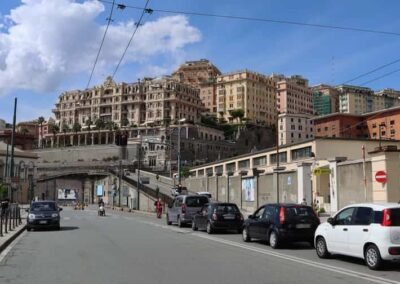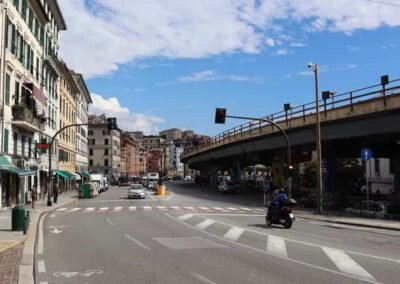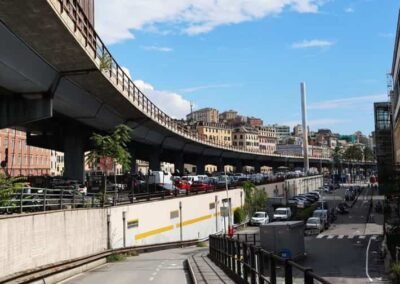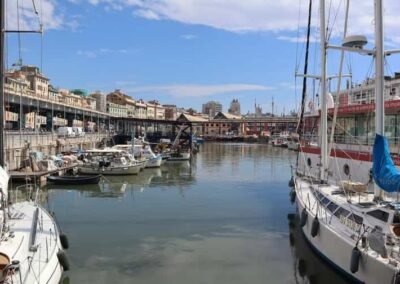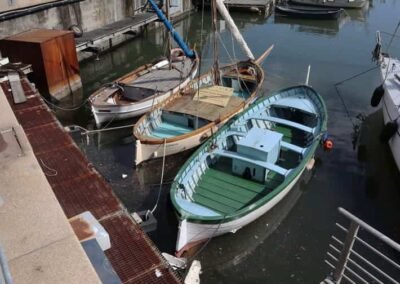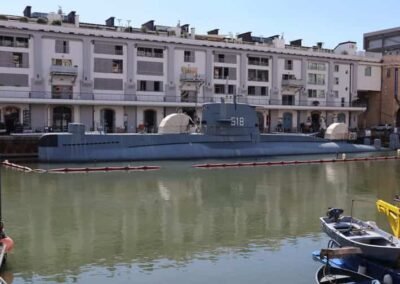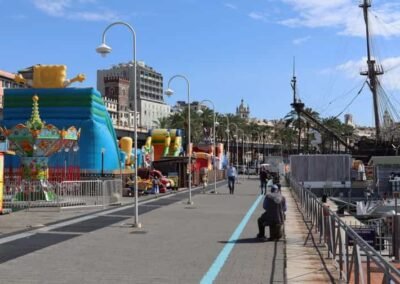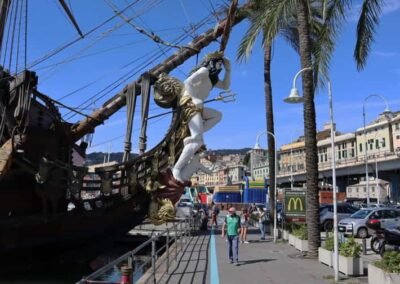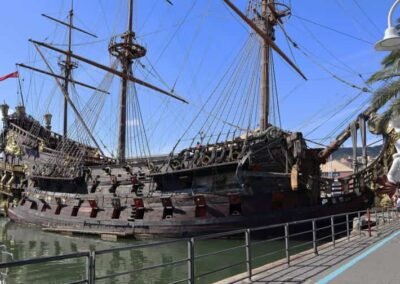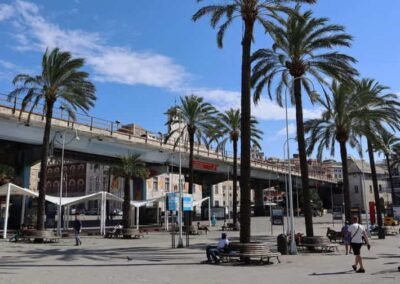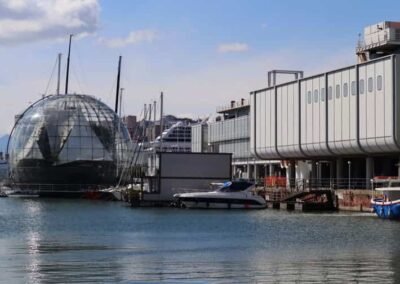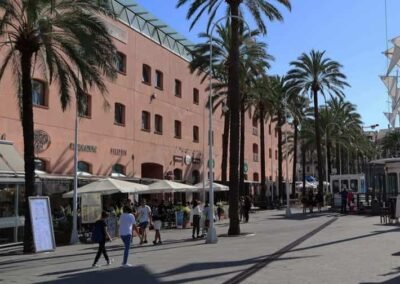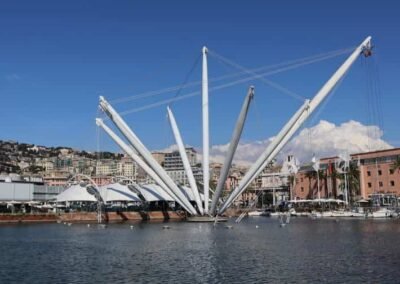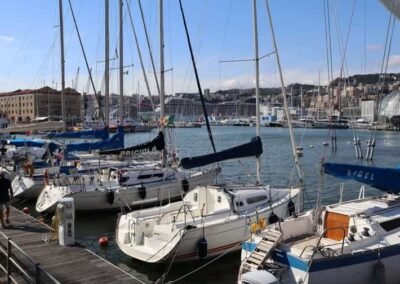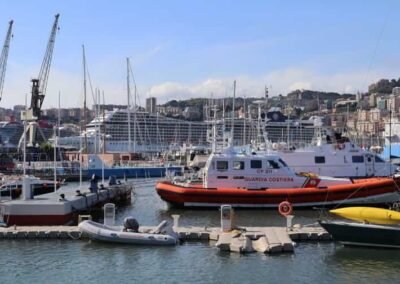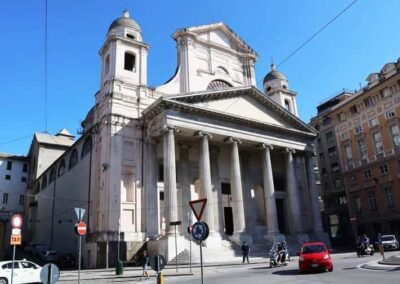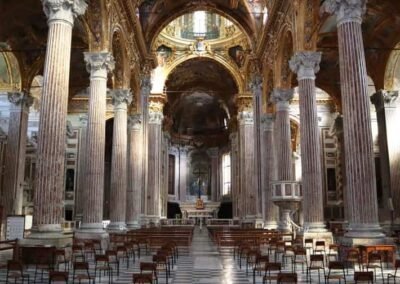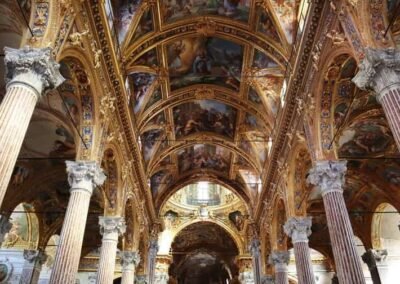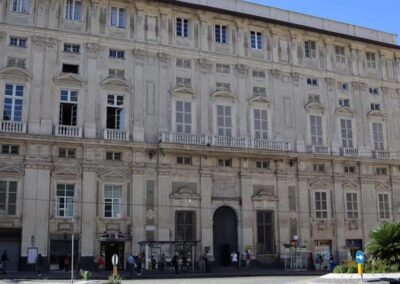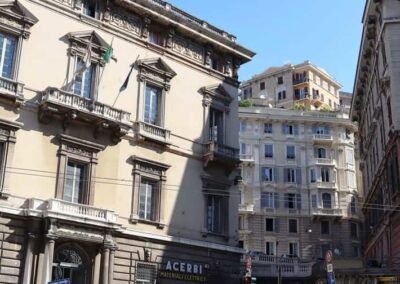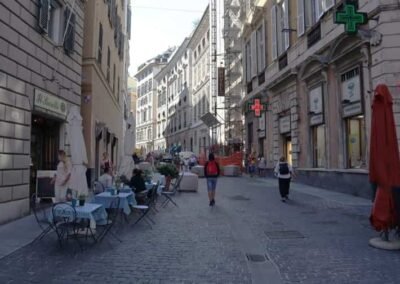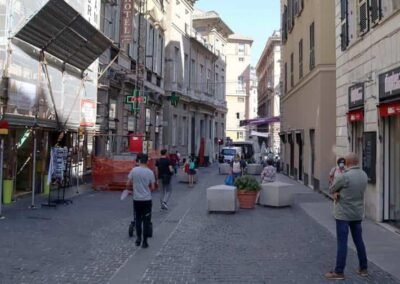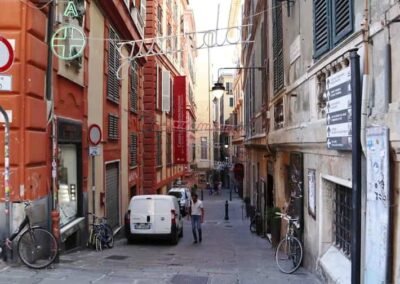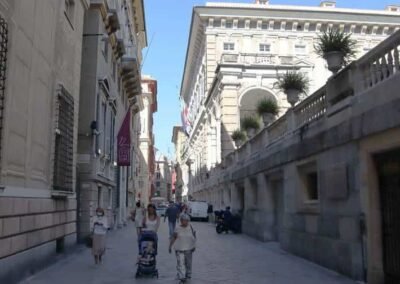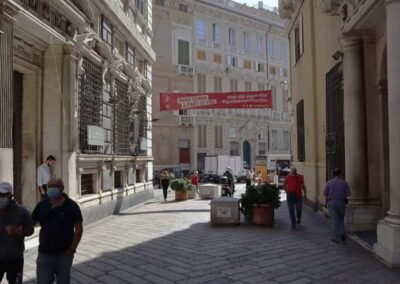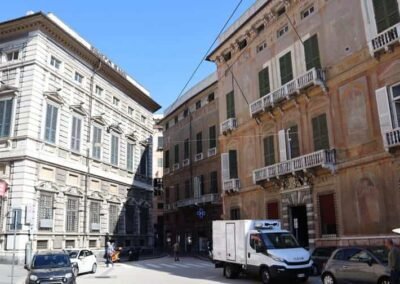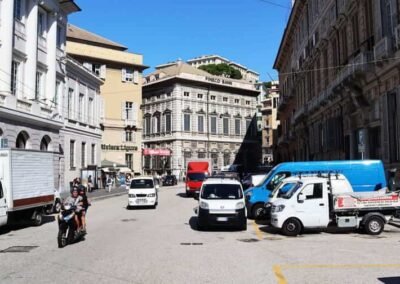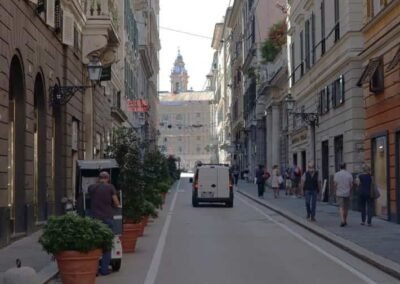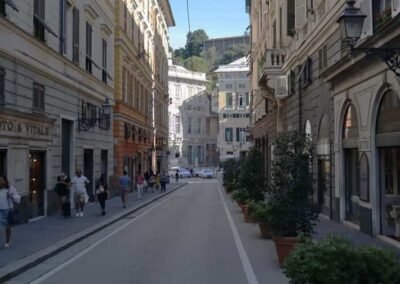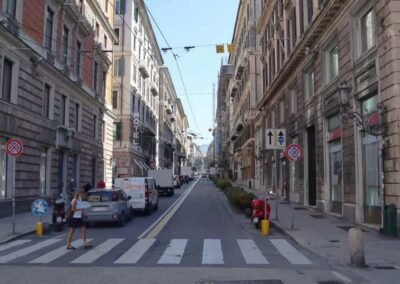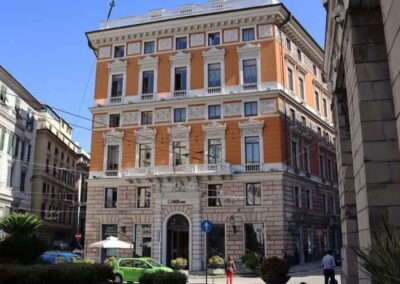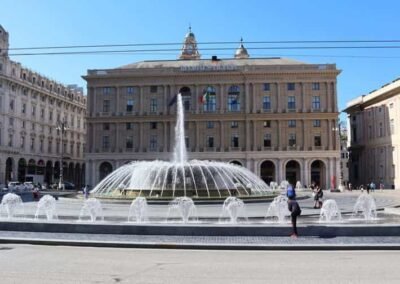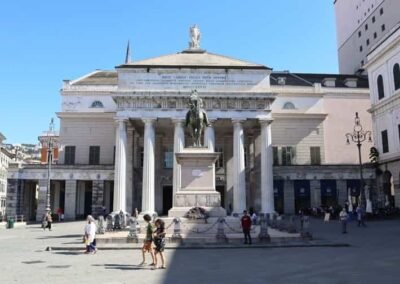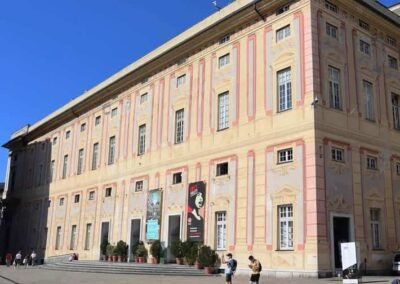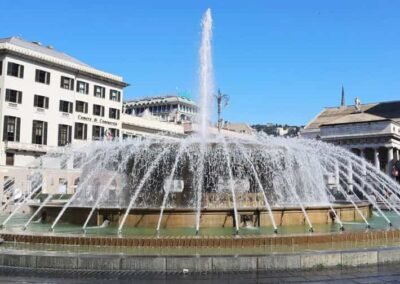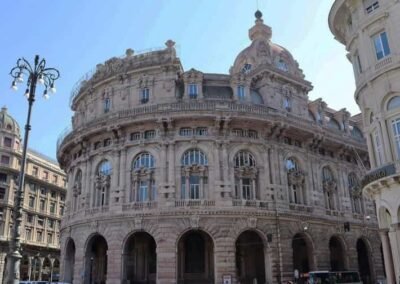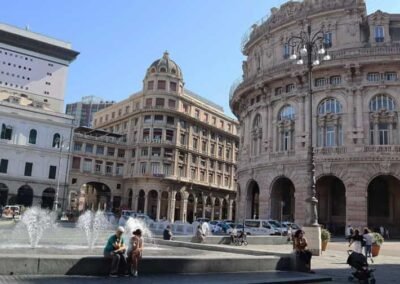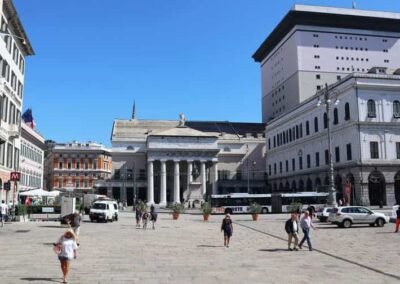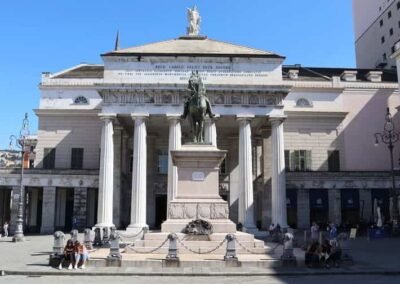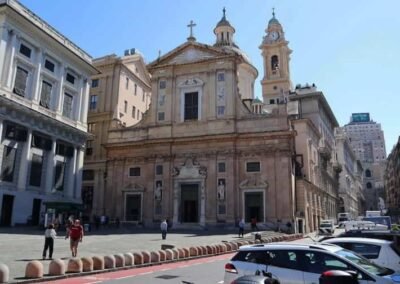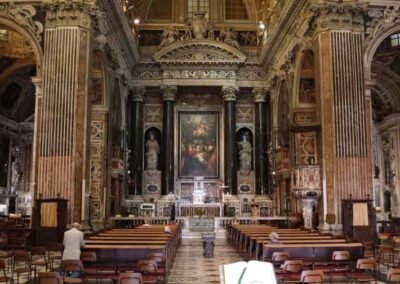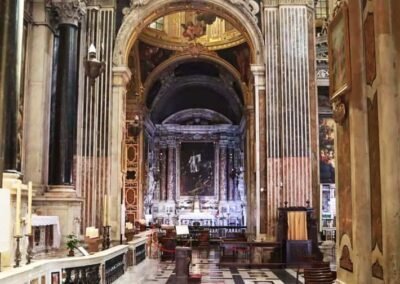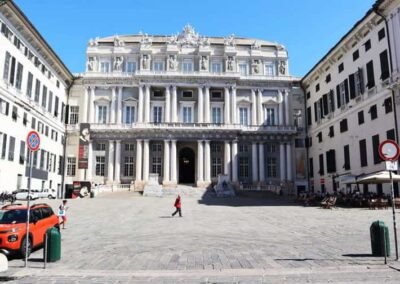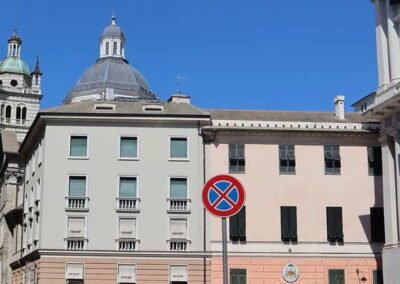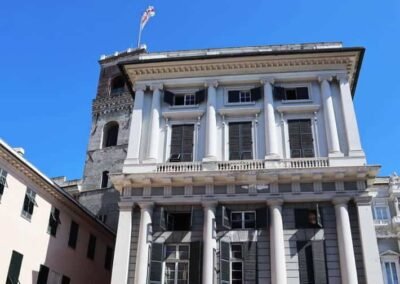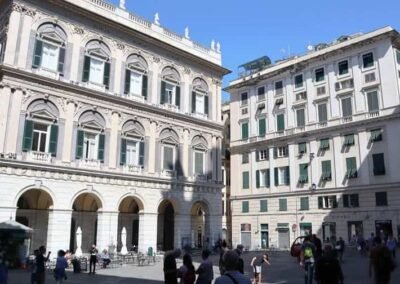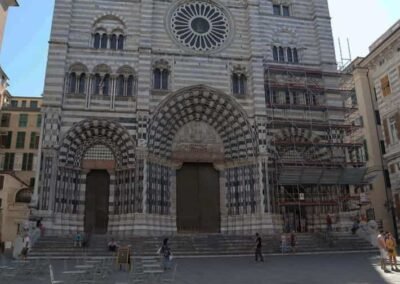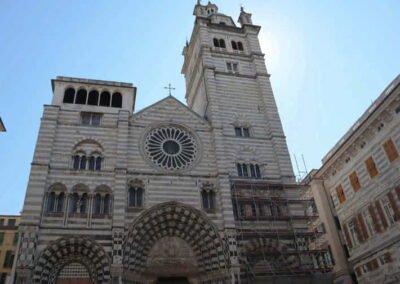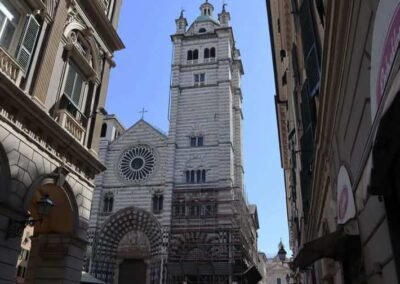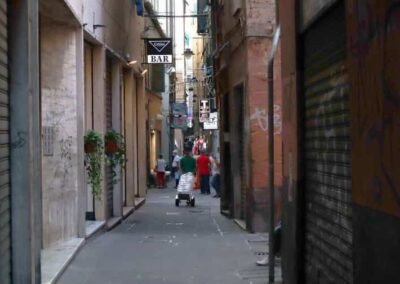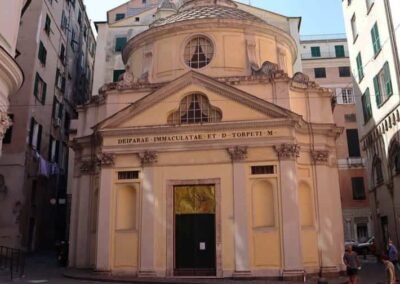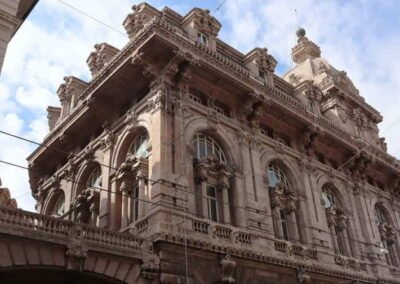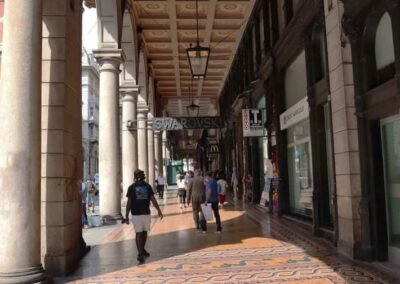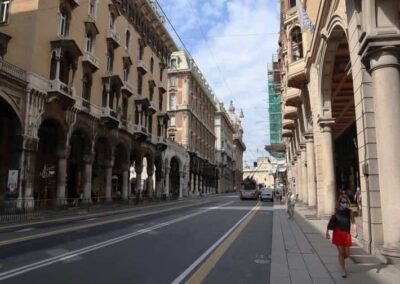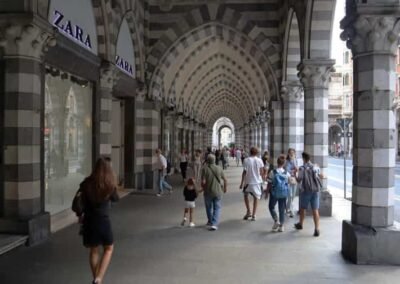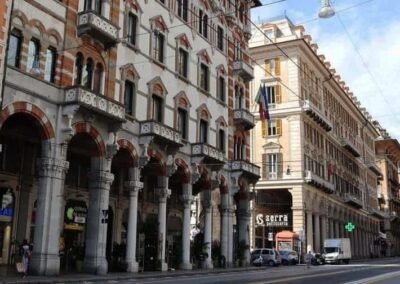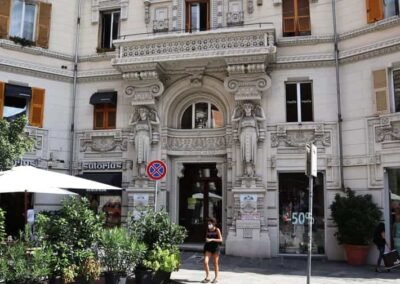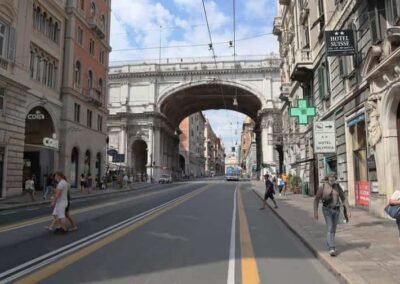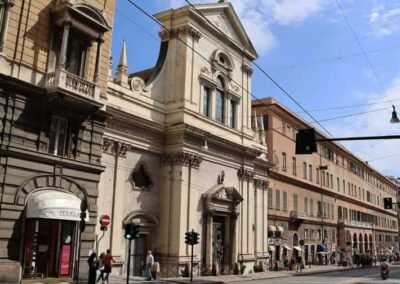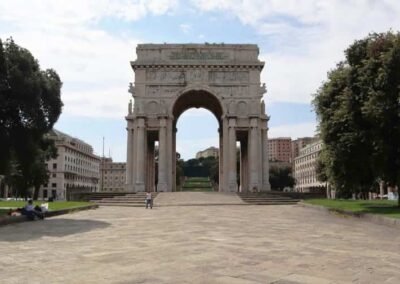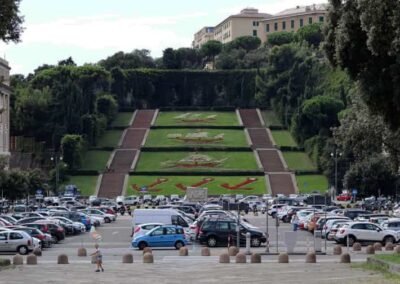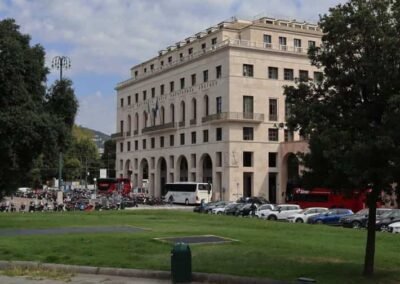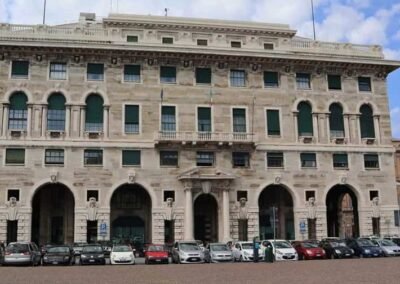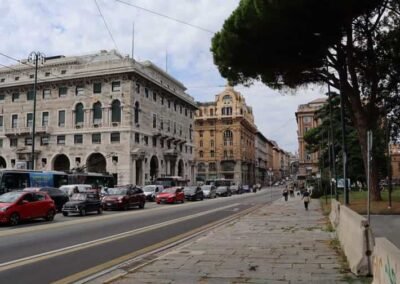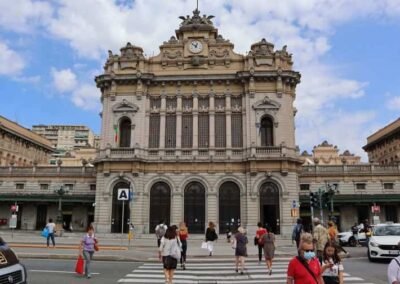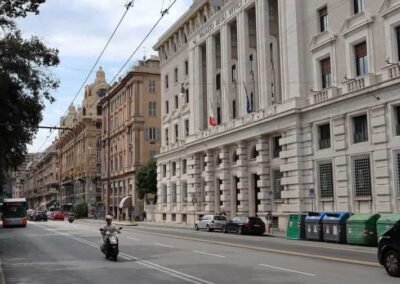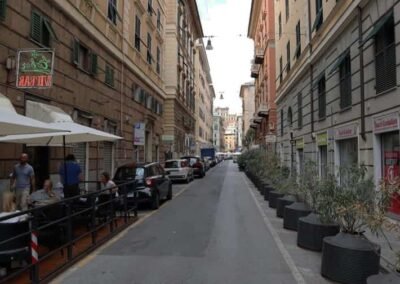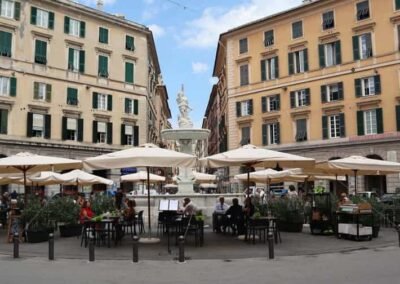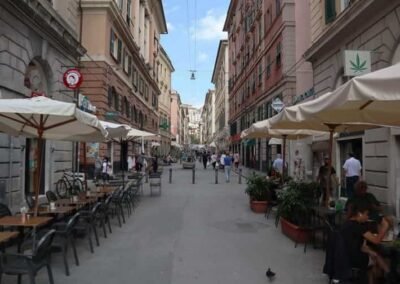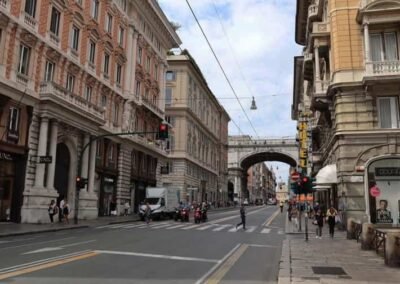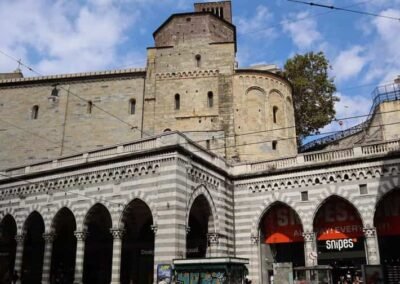HOME
THE REGIONS OF ITALY
PLACES IN ITALY
Italy in Photos
Piazzale Porta del Molo, 16128 Genova GE, Italy (September 2020)
Genoa
Genoa, known as “Genova” in Italian, is a captivating port city on the northwest coast of Italy, nestled between the Ligurian Sea and the Apennine Mountains. As the capital of the Liguria region, it has long been a hub of maritime power, culture, and trade. Genoa’s nickname, La Superba, meaning “the Proud One”,reflects both its glorious past and its enduring charm. Once one of the greatest maritime republics alongside Venice, Pisa, and Amalfi, Genoa played a crucial role in shaping the history of the Mediterranean. Today, it remains a city of contrasts: ancient and modern, gritty and elegant, traditional yet full of innovation.
Walking through Genoa is like stepping into an open-air museum. The city’s historic centre, one of the largest medieval quarters in Europe, is a maze of narrow alleys known as “caruggi“. These winding lanes are filled with lively shops, small cafes, and hidden churches that tell stories of centuries past. At the heart of this district lies the magnificent “Via Garibaldi”, lined with Renaissance and Baroque palaces. Many of these, now part of the Palazzi dei Rolli, are UNESCO World Heritage Sites. Their elaborate facades and ornate interiors reflect the wealth and sophistication of the Genoese nobility during the city’s golden age.
Genoa’s seafaring heritage is most visible at its bustling harbour, once one of the most powerful in Europe. The city’s port remains one of Italy’s busiest and most important, connecting the country with destinations across the globe. The redeveloped Porto Antico, redesigned by architect Renzo Piano, now serves as a cultural and recreational hub. Here visitors can explore the famous Genoa Aquarium, one of the largest in Europe, or simply stroll along the waterfront and enjoy the views of the sea and the city’s skyline.
Beyond its historical and maritime appeal, Genoa is a city of culture and cuisine. It gave the world Christopher Columbus and the famous basil-based pesto alla genovese, a symbol of Ligurian cooking. Local specialties such as focaccia, trofie pasta, and fresh seafood capture the flavours of the Mediterranean. Genoa also boasts a vibrant arts scene, with theatres, museums, and festivals that celebrate music, film, and tradition. Rich in history yet full of modern energy, Genoa offers an authentic Italian experience far from the typical tourist trails. It is a city that reveals its beauty gradually, rewarding those who take the time to explore its streets, its people, and its soul.
Worth a Visit
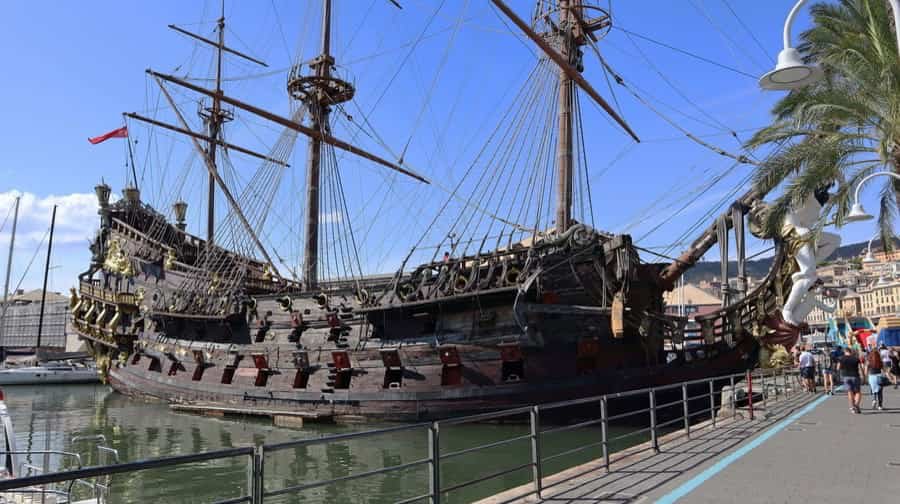
Porto Antico, or the Old Port of Genoa, is one of the most fascinating and vibrant areas of the city, blending centuries of maritime history with modern attractions and cultural life. Once the heart of Genoa’s naval power, the port has been at the centre of trade, commerce, and exploration since the Middle Ages. It was from here that ships set sail across the Mediterranean and beyond, linking Genoa to faraway markets and contributing to its reputation as one of the great maritime republics of Italy. Today, while its role as a commercial harbour has shifted to more modern facilities, Porto Antico has been transformed into a dynamic space that welcomes visitors with museums, entertainment, dining, and scenic views. The redevelopment of the Old Port was largely guided by the world-renowned Genoese architect Renzo Piano in the early 1990s. His vision preserved the historic character of the harbour while opening it up to the public as a space of leisure and culture.
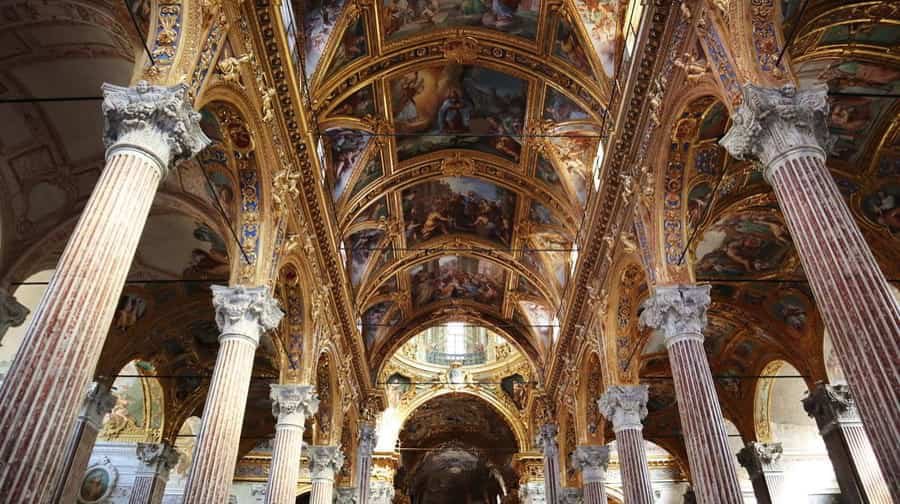
The Basilica della Santissima Annunziata del Vastato in Genoa is one of the city’s most remarkable religious landmarks, admired for its striking Baroque interior and its role in the artistic and spiritual life of the Ligurian capital. Located just outside the historic centre, near Piazza della Nunziata, the church immediately impresses visitors with its grand façade and monumental presence. While its exterior may appear relatively restrained, stepping inside reveals a breath-taking display of Baroque decoration, gilded stuccoes, and dramatic frescoes that have made it one of the most richly adorned churches in Genoa. The history of the basilica stretches back to the early 16th century, when construction began under the direction of the Franciscan friars. The term “Vastato*” refers to the area outside the medieval city walls that had been cleared for defensive purposes, providing the space on which the church was erected.
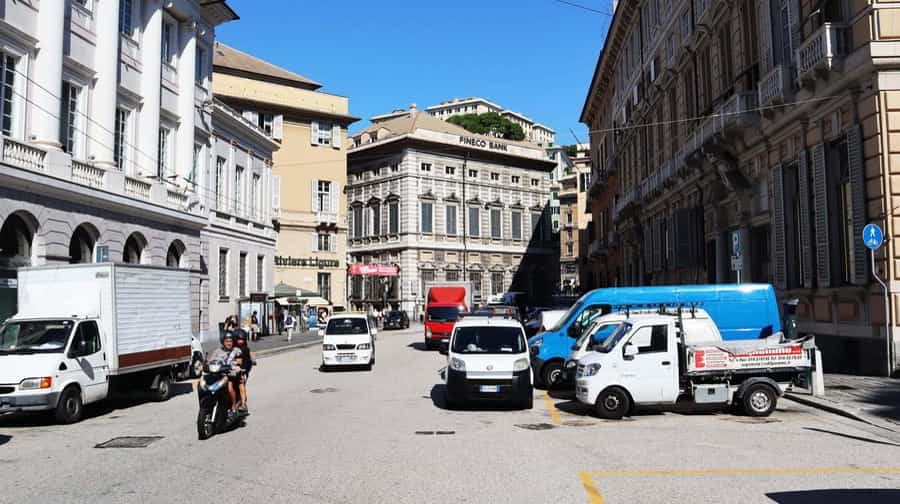
Piazza delle Fontane Marose is one of Genoa’s most refined and historically resonant squares, a place where architecture, history, and urban memory intersect. Situated close to Via Garibaldi and the network of the Palazzi dei Rolli, this square has long been associated with the city’s aristocratic heritage. Unlike larger, more bustling piazzas, Piazza delle Fontane Marose has an intimate, almost secluded charm. It owes its name and much of its identity to the presence of the fountains (fontane) that once adorned the area, an element so important that it became permanently linked to the square’s character. The word “marose” comes from the Genoese dialect, meaning “wet” or “dripping.” This refers to the abundant water that flowed here from natural springs and aqueducts.
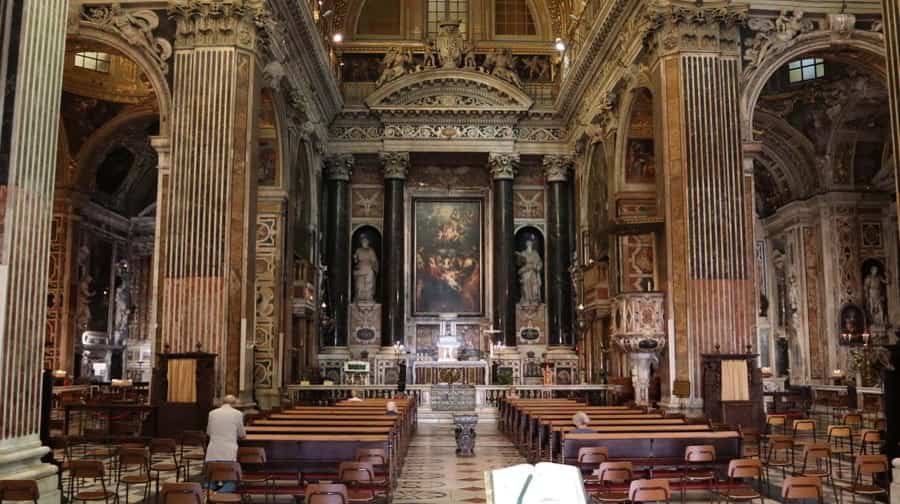
Situated majestically on Piazza Matteotti, just a step away from Piazza De Ferrari and the Palazzo Ducale, the Chiesa del Gesù e dei Santi Ambrogio e Andrea, often shortened to Chiesa del Gesù, is one of Genoa’s most lavish Baroque churches. Its origins are ancient: the church traces back to the 6th century, created as a refuge for the Milanese clergy, including the exiled Bishop Ambrose, fleeing Lombard invasions. This early house of worship, built near the Cathedral of San Lorenzo, served Milanese exiles until the 7th century. The current church took shape significantly later. In 1552, the Jesuits arrived in Genoa and, by 1589, had initiated a grand reconstruction under the direction of the Jesuit architect Giuseppe Valeriano.
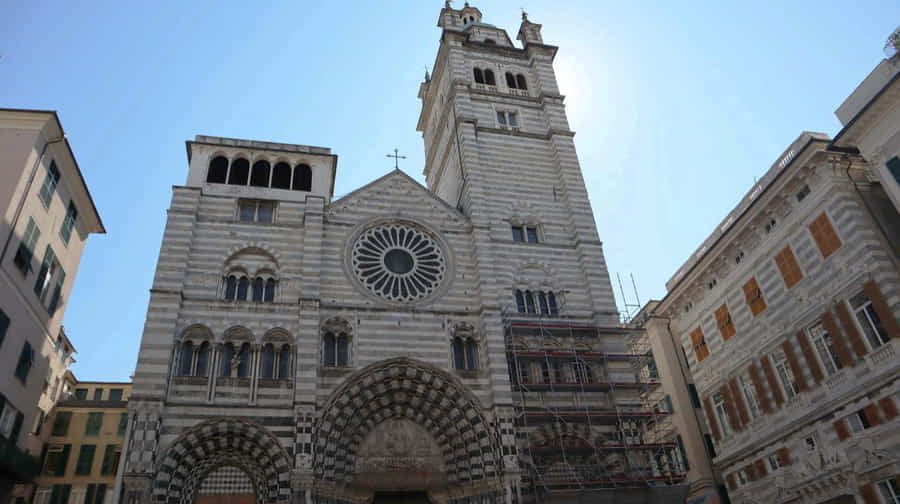
Piazza San Lorenzo, located in the historic heart of Genoa, is one of the city’s most important and symbolic squares. It takes its name from the magnificent Cattedrale di San Lorenzo (Cathedral of Saint Lawrence), which dominates the space with its striking black-and-white striped façade, a fine example of Ligurian Gothic architecture. The square is not only a religious centre but also a cultural and civic landmark, reflecting centuries of history and the changing fortunes of Genoa as a powerful maritime republic. Visitors arriving at Piazza San Lorenzo immediately sense the weight of tradition and the enduring presence of a city that once stood at the crossroads of Mediterranean trade, diplomacy, and art.
Photo Gallery of Walk 1 – Via Venezia to Piazzale Porta del Molo
Approximately 0.00 km – 0.00 miles
The walk starts in Via Venezia – Piazza Dinegro – Via S. Benedetto – Piazza del Principe – Via Antonio Gramsci – Via Marino Boccanegra –Calata Ansaldo De Mari – Calata Simone Vignoso – Porto Antico – Calata Falcone e Borsellino – Calata Cattaneo –Piazzale Porta del Molo
Photo Gallery of Walk 2 – Piazzale Porta del Molo to Piazza Raffaele de Ferrari
Approximately 0.00 km – 0.00 miles
The walk starts in Piazzale Porta del Molo – Basilica della Santissima Annunziata del Vastato – Piazza della Nunziata – Via Cairoli – Via Garibaldi – Piazza delle Fontane Marose – Via XXV Aprile – Via Roma – Largo Sandro Pertini – Piazza Raffaele de Ferrari
Photo Gallery of Walk 3 – Piazza Raffaele de Ferrari to Piazza S. Giorgio
Approximately 0.00 km – 0.00 miles
The walk starts in Piazza Raffaele de Ferrari – Largo Sandro Pertini – Via Cardinale Pietro Boetto – Chiesa dei Santi Ambrogio e Andrea detta del Gesù Via di Porta Soprana – Piazza Giacomo Matteotti – Via S. Lorenzo – Piazza San Lorenzo – Via S. Lorenzo – Via di Canneto Il Curto – Piazza S. Giorgio
Photo Gallery of Walk 4 – Via XX Settembre to Lungomare Cordella – Via Galata – Via XX Settembre
Approximately 0.00 km – 0.00 miles
The walk starts in Via XX Settembre – Piazza della Vittoria – Via Luigi Cadorna – Piazza Giuseppe Verdi – Via Fiume – Via Colombo – Piazza Colombo – Via Galata – Via XX Settembre
COPYRIGHT © 2018-2025 ITALY IN PHOTOS - ALL RIGHTS RESERVED
